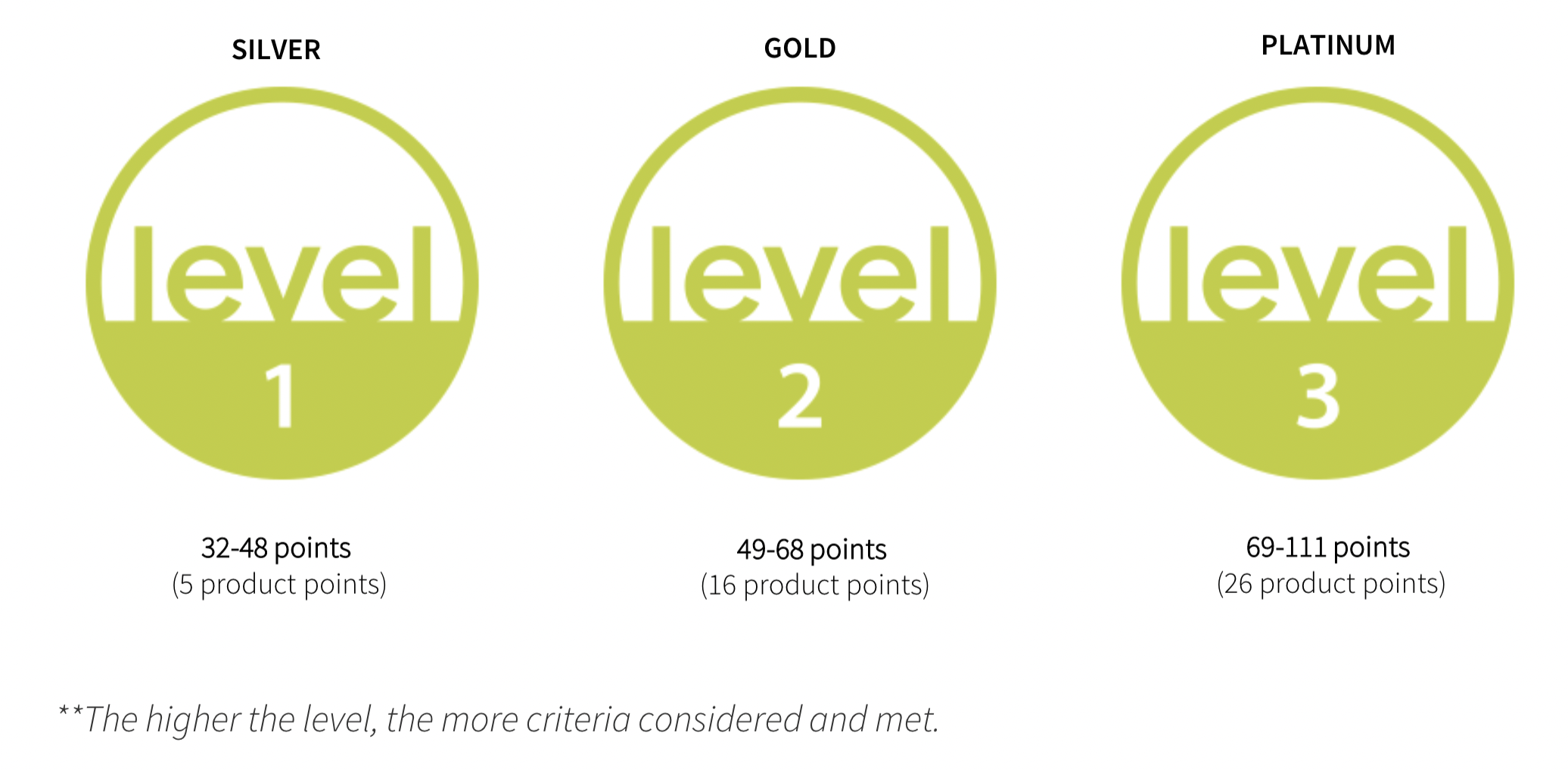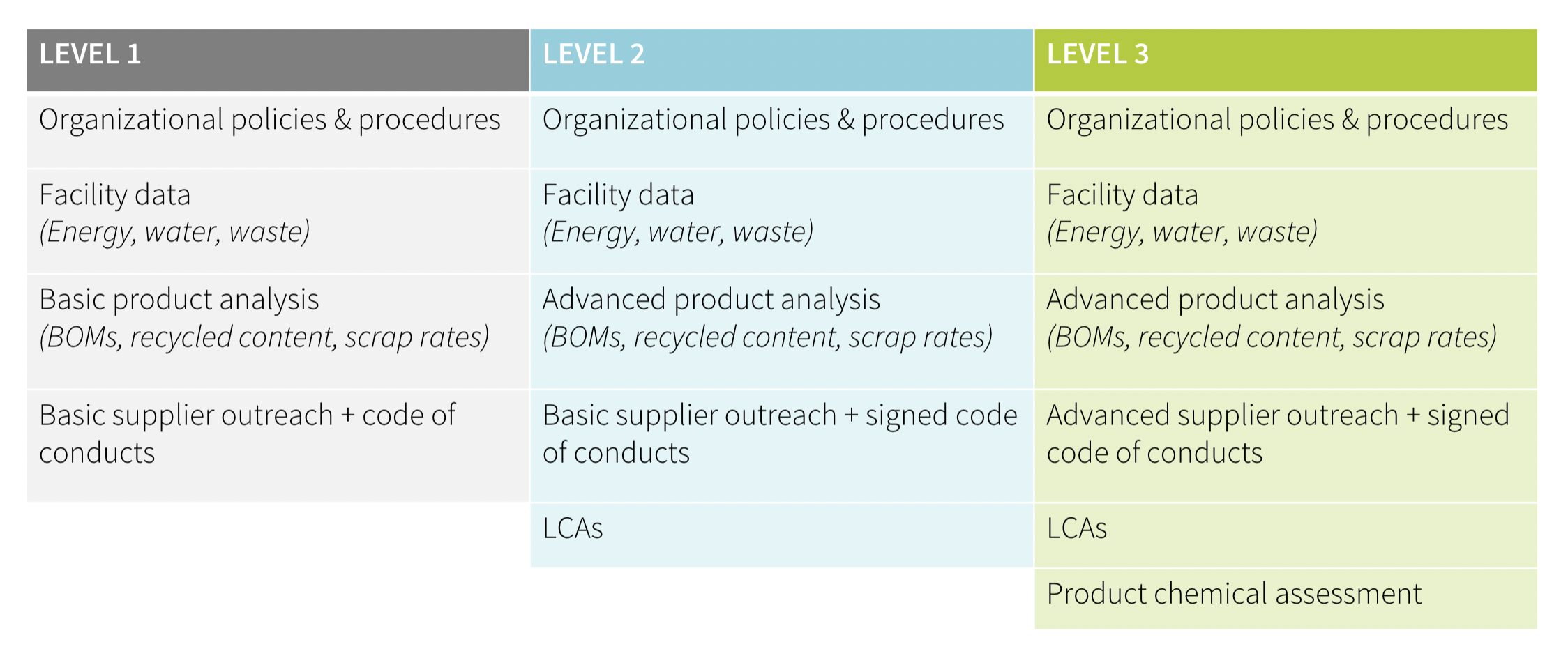BIFMA LEVEL Certification: Implementing Success
by Wendy Schlett, Natalie Vezina, and Brad VanVolkenberg
We believe in the power of transparency to drive change. When companies are open, honest, and accurate about their ESG efforts, stakeholders can engage in improvement on all levels. Certifications and standards provide unifying frameworks for reporting these efforts, building accountability and consistency in the marketplace. Furthermore, certifications create alignment with other governing bodies for a holistic approach to sustainability management.
The BIFMA LEVEL standard delivers the most open and transparent means of evaluating and communicating the environmental and social impacts of furniture products in the built environment. It is a multi-attribute standard that doesn’t just consider the product itself but also the facility and organization that creates the product. A sustainable product can be created by an unsustainable business in an unsustainable facility; for BIFMA, certifying a product inherently involves the facility and organization which developed it.
Above and beyond just their standards, BIFMA LEVEL aligns with the requirements of many other standards, such as LEED, WELL Certification, and Living Building Challenge. BIFMA’s standards pull from these overarching standards to determine what is specific to the office furniture industry, ensuring that BIFMA LEVEL standard products qualify for other certifications.
Pursuing a product certification such as BIFMA LEVEL doesn’t only speak to the quality, and intentionally of one specific product; it tells a greater sustainability story in the marketplace and positions your company to achieve a multitude of other standards. Through achieving BIFMA LEVEL certification, your company will have the data in hand to publicly report GHG emissions, provide environmental product declarations, respond to the CDP, and have Cradle to Cradle data to complete full Life Cycle Assessments.
Understanding the BIFMA LEVEL Standard
As a multi-attribute standard, the BIFMA LEVEL certification accounts for the product, facility, and organizational boundaries. Each of these boundaries is evaluated on their environmental, health and wellness, and social impact. The certification is divided into three performance tiers: silver, gold, and platinum. These performance tiers are determined through the combination of overall points and product points, with prerequisites for each impact. The prerequisites don’t generate points but are required as a minimum performance level. Additionally, there is no minimum point requirement for each impact element, just the total points earned across all elements.
When compiling credits, it’s important to note that organizational credits apply to all facilities and all products, while facility credits only apply to the products created in those facilities. In this way, organizational credits provide a lot of value, as they can be applied to all products within a company. Similarly, facility credits apply to all products that were manufactured at that facility. Products with similar compositions and manufacturing processes can be grouped together into product categories and subcategories to simplify certification and recertification. Certifications are valid for three years, with desk-top audits conducted annually between full recertification years. Keeping up-to-date on your data collection between recertifications saves time, energy, and resources. At Foresight, our Sustainability as a Service offering, Flourish, not only supports companies through certification processes but simplifies recertification by implementing tech-enabled data collection strategies for easy access to ESG metrics.
Tips for BIFMA LEVEL Success
Start off organized
Pursuing BIFMA LEVEL certification is a substantial undertaking, one that will require teamwork, resources, and strategy. Here are some tips to streamline your process:
Interview auditors, select a Certifying Body, and define timelines
Verify any changes to Product Bracketing
Establish a credit selection plan and explore possible points to achieve desired LEVEL
Schedule a kickoff meeting with interested stakeholders and responsible parties
Create a documentation tracking sheet
Communicate high-level plans with the auditor (strategy, audit dates, etc.)
Aim for the appropriate tier
In choosing which level to pursue, it helps to understand what kinds of data will be required. Here is a look at what is typically required to achieve each tier of LEVEL certification. Knowing what resources are at your disposal will help you determine which level is most appropriate.
Stay on top of project management
Keeping track of multiple documentation efforts simultaneously can be daunting. Here are a few recommendations to help you:
Set weekly check-in meetings
Tackle large time sinks first, such as supplier outreach, product analysis, and bill of material collection
Refer to BIFMA’s Guidance Manual for assistance with credits
Identify overlapping documentation (e.g. LCAs, energy & GHG data)
Update project management tools and documentation trackers as needed
Enlist an expert team
Certifications and standards require a wide range of expertise, from energy analysis to chemical engineering to product composition. Outside help provides a team-based, multidisciplinary approach to standard management, bringing in experts in each field. With over 100 years of combined experience in sustainability, our team supports companies through every step of the BIFMA LEVEL process, from determining which tier to pursue to assisting with supplier outreach, data collection and analysis, and submitting to an auditor. Furthermore, our team will set up systems and processes to support recertification and advise you on how to optimize your efforts for other certifications in your industry.
To learn more about our Product Certification service or our ongoing Sustainability as a Service offering, Flourish, reach out to Mike Troupos.






